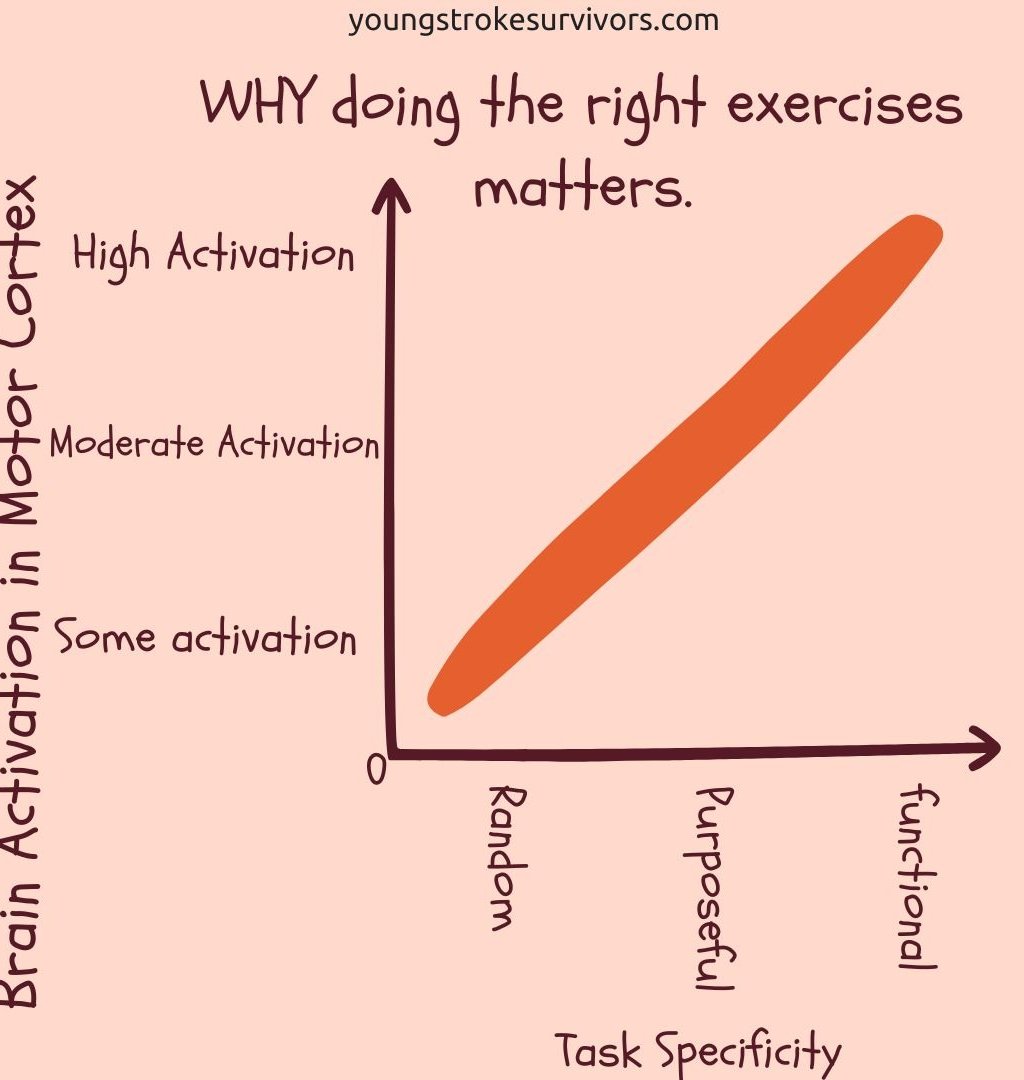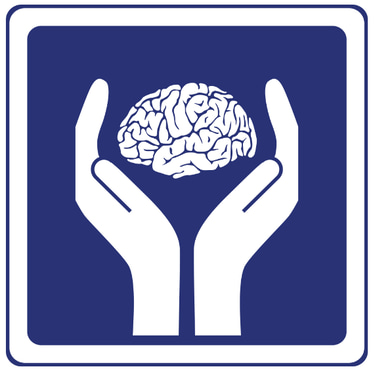Get much needed help ...
Why the Right Task Matters: Understanding the Motor Activation Curve After Stroke
Not all exercises fire the brain the same way. And that difference — the type of movement — is often the difference between slow progress and sudden breakthroughs.
11/23/20252 min read


Why the Right Task Matters After Stroke: The Motor Activation Curve
When you’re recovering hand movement after stroke, people often tell you to “keep practicing” or “use your hand more.” But what most survivors aren’t told is that not all movements activate the brain equally.
Some tasks barely stimulate the motor cortex.
Others light it up.
This difference — task specificity — is exactly what the motor activation graph explains.
The Motor Activation Graph
As you move from random movements to meaningful tasks, the brain’s activation increases exponentially.
This one graph explains why early recovery feels slow and why functional tasks suddenly create rapid changes.
1. Low Activation: Random or Non-Specific Movements
These include:
aimless finger movements
passive stretching
squeezing a ball without intention
random wrist rotations
These movements create low neural activation because the brain has no meaningful goal to work toward. They can help with mobility and awareness, but they don’t strongly drive neuroplasticity.
2. Moderate Activation: Purposeful, Repetitive Movements
Examples include:
finger tapping
wrist extension
finger–thumb opposition
controlled reach-and-return
These movements are intentional and help organize motor pathways.
They create moderate activation, which strengthens early neural connections and prepares the hand for functional tasks.
This is where survivors often notice the first signs of smoother, more reliable movement.
3. High Activation: Task-Specific Functional Movements
This is the steep upward part of the curve — the place where the brain fires at maximum intensity.
Examples:
holding a cup
buttoning clothing
picking up coins
writing or typing
pouring water
opening containers
These tasks demand:
timing
coordination
sensory feedback
purpose
real-life relevance
Because of this, they engage multiple motor areas at once.
This results in the highest neural activation and the fastest recovery.
This is also the stage where survivors often feel one big breakthrough after months of slow improvement.
Why the Curve Is Exponential
Early movements result in small changes.
The brain is just waking up, reconnecting, reorganizing.
But as you shift into purposeful and functional tasks, the brain begins to:
strengthen new pathways
recruit additional neurons
synchronize both sides of the brain
speed up motor signals
That’s why recovery feels slow for a long time…
and then suddenly speeds up.
What This Means for Your Recovery
Don’t judge progress by early-stage movements.
Move from random → purposeful → functional tasks.
Daily-life actions are not optional — they are essential.
Small, consistent, meaningful practice is more powerful than long unfocused sessions.
Functional tasks are the engine of neuroplasticity.
Final Thought
Recovery isn’t about doing every exercise.
It’s about doing the right exercises — the ones that push the brain to fire strongly and rebuild its pathways with purpose.
The motor activation curve isn’t just science.
It’s a roadmap for every survivor learning how to trust their brain again.
